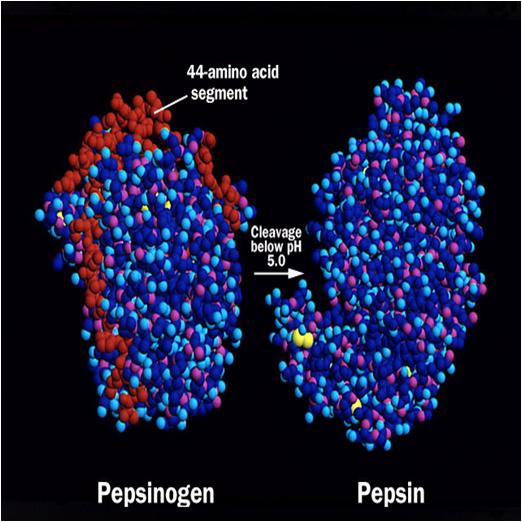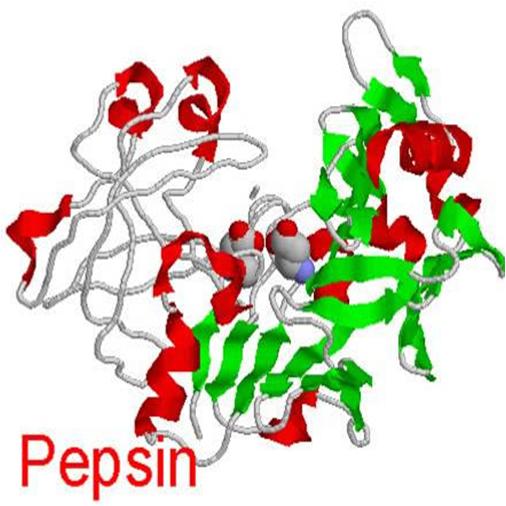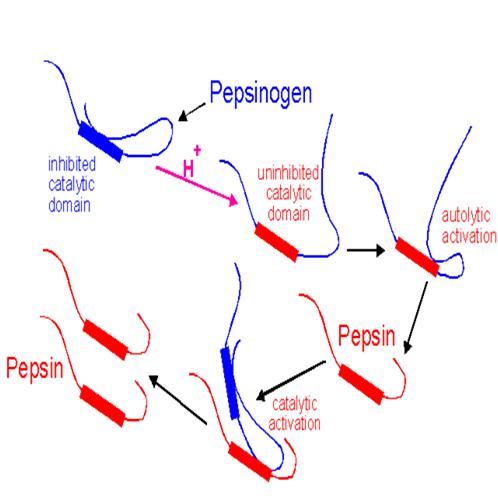Difference between Pepsin and Pepsinogen

Both pepsin and pepsinogen are the main proteases in gastric secretions of grown-up mammals. They are protein in origin and are synthesized as inactive pre-proenzymes. Pepsin and Pepsinogen play a vital role in the digestive system’s smooth operation. Both these terms are often confused as there are some similarities between their mode of production, appearances and functions. They are basically outputs of the same digestive organ and pepsinogen is the originator of pepsin. Nevertheless, there are technical differences between the two.
Pepsin is a proteolytic enzyme (Proteinase), a group of enzymes that catalyze the molecules of proteins into small fragments and ultimately into amino acids. Pepsinogen on the other hand, is a proenzyme – an unmoving precursor that can be transformed to an active enzyme.
Pepsinogen is produced by pyloric glands and chief cells, while pepsin is not secreted by them.
Unlike pepsin, pepsinogen can be converted to pepsin by hydrochloric acid (HCL).
Pepsinogen’s secretion is stimulated by histamine, vagal stimulation and gastrin, whereas the same is not the case with pepsin.
Moreover, pepsinogen is constant in both alkaline and natural solutions, while pepsin is not.
Pepsin can break down proteins into smaller components, but pepsinogen cannot hydrolyze any enzyme.
Pepsin can be triggered by lowering the pH of the medium, but pepsinogen cannot.
Instructions
-
1
Pepsin
Pepsin is “an inactive form of pepsinogen that is produced in the stomach”. It activates only during the digestion process and breaks down the proteins in the food into components like peptones, proteoses and polypeptides. This protein digesting enzyme is stimulated by hydrochloric acid (HCl) in the digestive tract. It was the very first enzyme to be acknowledged. This enzyme is naturally produced in the stomach, but some supplements can also stimulate it.
Pepsin is composed of six helical sections, and every section consists of less than ten amino acids and organic compounds. It contains 44 amino acids on its N-terminus, released during the transformation process.
Image Courtesy: biyolojiegitim.yyu.edu.tr
-
2
Pepsinogen
It is the pro-form of pepsin that is produced in the stomach by gastric chief cells – also known as gastric zymogenic cells and peptic cells. The major portion of pepsinogen is secreted into the gastric lumen, while a small proportion can be found in the blood. Pepsinogen I and pepsinogen II are the major forms of this digestive enzyme, depending on the site of production/secretion.







